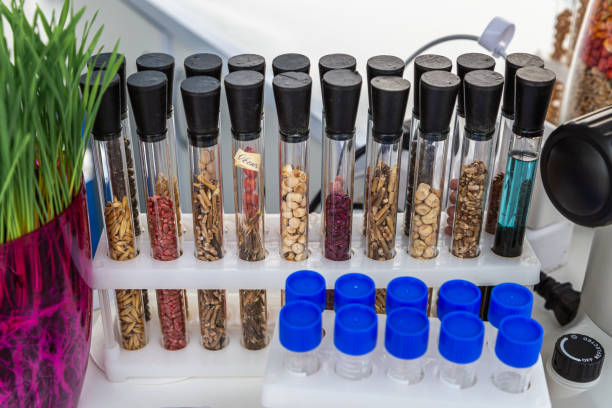
The seed industry plays a foundational role in global agriculture, serving as the starting point for food, feed, and fiber production. It encompasses the research, development, production, and distribution of seeds for crops ranging from grains and vegetables to oilseeds and forage. A thorough Seed Industry Analysis offers insights into the sector’s current dynamics, emerging trends, market challenges, and future opportunities. As the world faces increasing pressure to produce more food with fewer resources, understanding this industry becomes critical for policymakers, agribusinesses, and farmers alike.
Global Overview of the Seed Industry
The global seed market has witnessed steady growth over the past decade, driven by increasing demand for improved crop varieties, rising population, and technological innovations. According to recent market data, the global seed market size is expected to exceed USD 90 billion by 2030. This growth is fueled by the expansion of commercial agriculture and the adoption of hybrid and genetically modified (GM) seeds.
A comprehensive Seed Industry Analysis shows that North America, Europe, and Asia-Pacific are the leading regions in terms of seed production and consumption. The Asia-Pacific region, particularly India and China, presents vast potential due to large agricultural areas and government initiatives to increase crop productivity.
Key Segments in the Seed Industry
- Conventional Seeds
These are traditional, non-genetically modified seeds often used by small and marginal farmers. While they are gradually being replaced by hybrid varieties, conventional seeds remain important in local and subsistence farming. - Hybrid Seeds
Hybrid seeds are bred by cross-pollinating different plant varieties to create crops with superior traits such as higher yield, disease resistance, and better adaptability. A major focus of any Seed Industry Analysis is the rising demand for hybrid seeds, particularly in developing nations. - Genetically Modified (GM) Seeds
GM seeds are engineered for traits like pest resistance or herbicide tolerance. Although their adoption is controversial and subject to regulatory constraints, they hold a significant share in countries like the U.S., Brazil, and Argentina. - Organic Seeds
With increasing interest in sustainable and organic farming, the demand for certified organic seeds is growing. These seeds are produced without synthetic chemicals and are crucial for organic-certified crops.
Emerging Trends
- Biotech Advancements
The seed industry is rapidly evolving with biotechnology innovations like CRISPR gene editing and precision breeding. These technologies offer quicker and more targeted ways to improve crop traits. - Digital Agriculture
The integration of data analytics, satellite imagery, and mobile apps helps farmers choose the best seed varieties based on soil, climate, and market conditions. Digital tools are also streamlining seed distribution and monitoring. - Climate-Resilient Seeds
With climate change impacting agriculture, the development of drought-tolerant, heat-resistant, and flood-tolerant seeds is a priority for both public and private breeding programs. - Public-Private Partnerships
A key takeaway from any modern Seed Industry Analysis is the growing collaboration between governments, research institutions, and private companies to accelerate seed innovation and distribution.
Challenges Facing the Seed Industry
Despite its growth potential, the seed industry also faces a number of critical challenges:
- Intellectual Property Rights (IPR)
Seed patents and proprietary breeding techniques raise issues about farmer access and seed sovereignty, particularly in developing countries. - Regulatory Barriers
Varied and complex regulatory frameworks for GM seeds across countries often delay product approvals and limit global trade. - Counterfeit Seeds
The sale of fake or poor-quality seeds undermines farmer trust and affects crop yields. A robust supply chain and certification system are essential to address this issue. - High R&D Costs
The development of new seed varieties requires significant investment and long development timelines. Smaller companies often struggle to compete with global agribusiness giants. - Farmer Awareness and Training
The benefits of improved seeds can only be realized if farmers are educated about proper usage, planting techniques, and aftercare. A lack of extension services hinders adoption, especially in rural regions.
Future Outlook
The future of the seed industry looks promising with continued investments in innovation and sustainability. According to current Seed Industry Analysis reports, the market is expected to witness increased consolidation as major players acquire smaller companies to expand their portfolios and global reach.
Moreover, policies supporting research, affordable seed access, and climate resilience are likely to shape the next phase of industry growth. Emerging economies will play a significant role as they invest in agricultural modernization and food security.
There is also a growing push for open-source seeds and farmer-led breeding initiatives that prioritize diversity, resilience, and local adaptability over corporate control.
Conclusion
A detailed Seed Industry Analysis reveals both vast opportunities and complex challenges. As the backbone of agricultural productivity, the seed sector must strike a balance between innovation, inclusivity, and sustainability. By fostering collaboration across public and private sectors and embracing technological advancements, the industry can meet the growing global demand for food while protecting environmental and social well-being.

